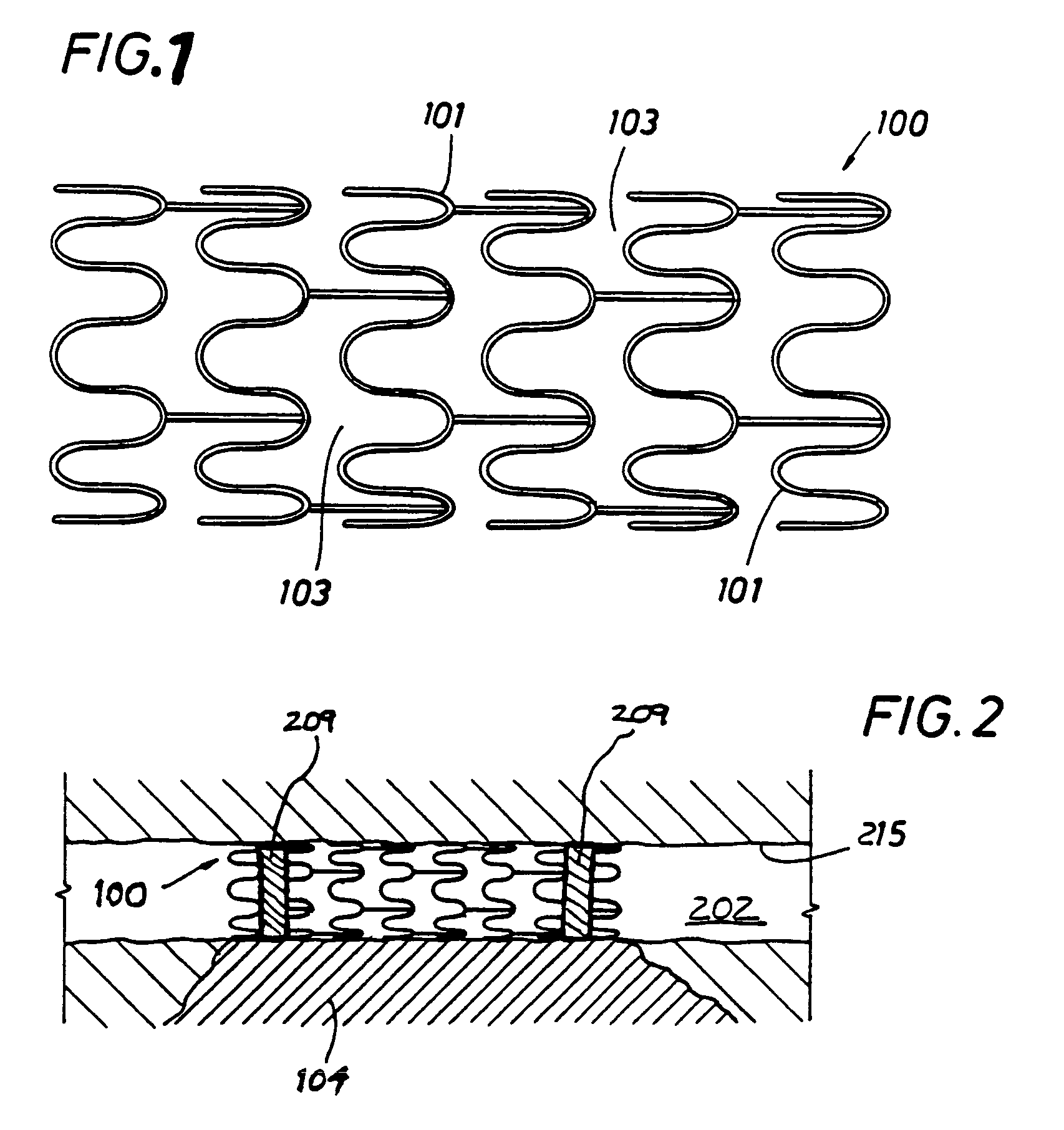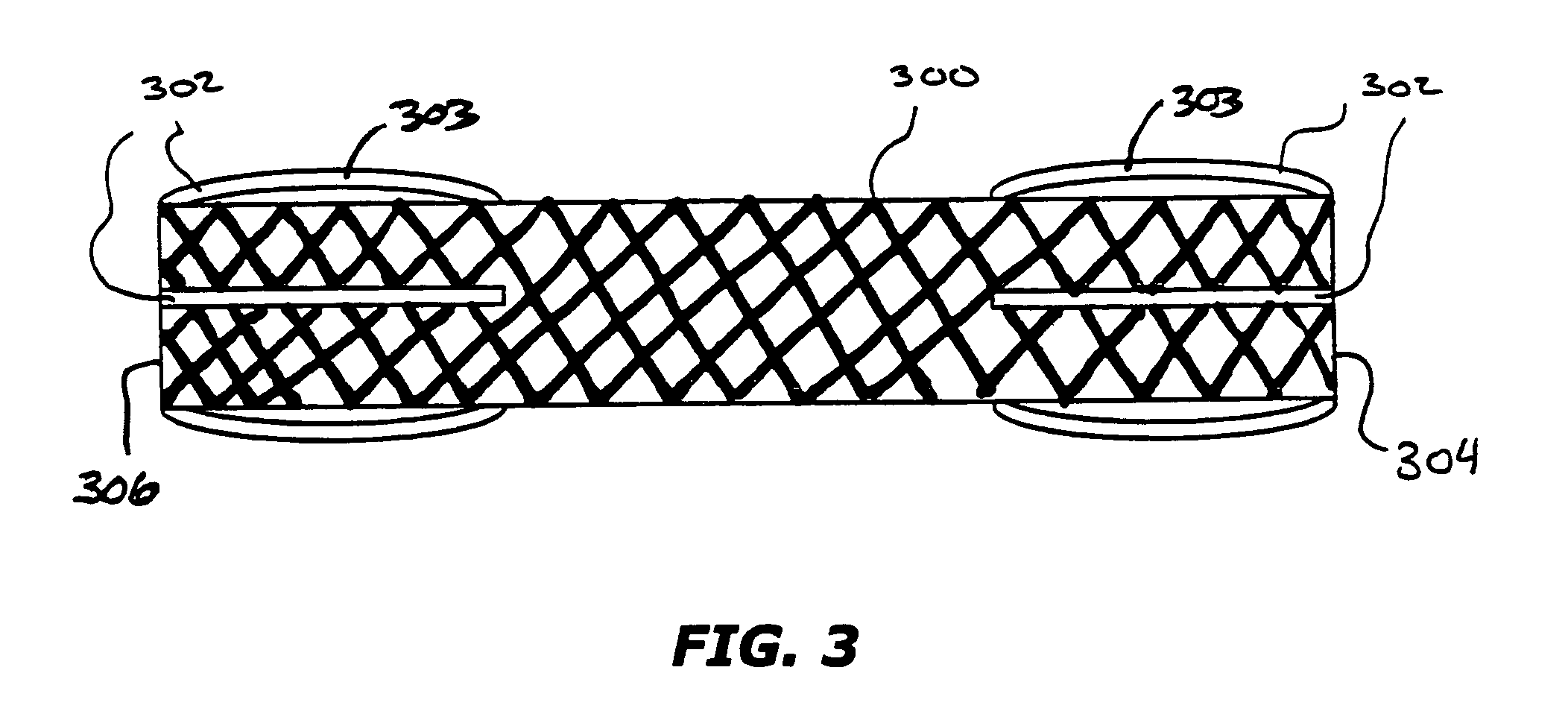Composite stent with regioselective material and a method of forming the same
a regioselective material and stent technology, applied in the field of intravascular implants, can solve the problems of reducing the stent end stent elastomeric band or strip containing desired therapeutic agents, reducing the stent end stent elastomeric band or strip, etc., to achieve high creep compliance and high creep compliance
- Summary
- Abstract
- Description
- Claims
- Application Information
AI Technical Summary
Benefits of technology
Problems solved by technology
Method used
Image
Examples
Embodiment Construction
[0016]FIG. 1 is an illustration of one embodiment of a stent 100 having an expandable structural frame, which may be formed of metal, polymer, or composite struts or wires. The open spaces found between the struts 101 of the stent 100 are called windows 103. In one embodiment, stent 100 is crimped onto an inflatable balloon attached to the distal end of a catheter, and is expanded by inflating the balloon. Unalloyed metals such as titanium and gold; thermal plastics such as polyester and polycarbonate copolymers; biocompatible metals such as platinum, platinum-iridium alloys, and cobalt-chromium alloys; other metals such as copper alloys; malleable metals such as annealed stainless steels, tungsten, and platinum; and composites of the materials listed above, are examples of materials that may be used to manufacture stent 100. Additional materials may include cobalt-chrome, titanium, and nitinol.
[0017]As shown in FIG. 2, stent 200 may be implanted within a tubular vessel 202 at or ne...
PUM
| Property | Measurement | Unit |
|---|---|---|
| creep compliance | aaaaa | aaaaa |
| creep compliance | aaaaa | aaaaa |
| diameter | aaaaa | aaaaa |
Abstract
Description
Claims
Application Information
 Login to View More
Login to View More - R&D
- Intellectual Property
- Life Sciences
- Materials
- Tech Scout
- Unparalleled Data Quality
- Higher Quality Content
- 60% Fewer Hallucinations
Browse by: Latest US Patents, China's latest patents, Technical Efficacy Thesaurus, Application Domain, Technology Topic, Popular Technical Reports.
© 2025 PatSnap. All rights reserved.Legal|Privacy policy|Modern Slavery Act Transparency Statement|Sitemap|About US| Contact US: help@patsnap.com



